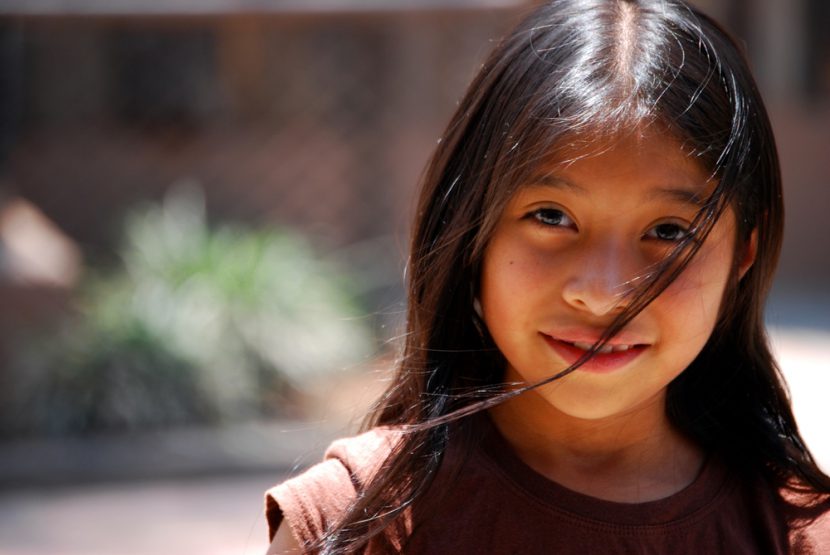On May 3rd, 2017, the United Nations Children’s Fund (UNICEF) presented its 2016 Annual Report, in which it stated that one third of the population of Mexico are children and teenagers, 21 million of whom live in poverty (UNICEF, 2017). According to this Report, it is worth reflecting on the situation of street children in Mexico City.
There are 14 322 children living and working in Mexico City, according to a survey undertaken in the year 2000 by the System for the Integrated Development of the Family in the Federal District and UNICEF (INEGI, 2004).
Life on the streets
The main places where street children can be seen in Mexico City are at the junctions of streets and avenues, in markets and in metro stations. Less frequently, they can be found in parks, shopping areas, tourist areas, bus terminals, vacant land and in car parks (Danielle Strickland, 2011).
There are various reasons why these children live and work on the streets, including migratory flows, poverty, social disintegration, abandonment, ill treatment and domestic violence. The fate that awaits them is often one of discrimination, drug use, exploitation, prostitution, police harassment and crime (Herrera Bautista, 2011).
The work or activities they perform in order to obtain resources are highly varied. Some of the children and young people organize themselves into “gangs/groups” to work together and share the rewards, to obtain money, food, drugs and protection, to defend their territory and possessions, to guard against the authorities, to reaffirm their identities and to build relationships with other members of the group (Magazine, 2007).
Despite the work of the civil society organisations (OSCs), the phenomenon is growing
There are around 40 OSCs dedicated to the welfare of street children in Mexico City (Danielle Strickland, 2011). Unfortunately, the work they do has been dominated by a welfare-orientated vision, lacking in coordination and continuity which, rather than achieving the goal of reintegrating the street children into their families or into society, has only succeeded in entrenching them further into the streets, where they end up using the welfare programs as just another means of obtaining resources to survive (Magazine, 2007).
The experience gathered by some of the institutions and organizations illustrated that despite of their efforts, the phenomenon was growing in both scale and complexity. This is why it has become necessary to translate this learning process into a well-articulated government policy, in order to achieve a greater impact and a more efficient use of resources. Also, to be able to focus on prevention and on integral human development, by dealing with the structural problem (REDIM, 2003).
Seven fundamental criteria for the design of an appropriate government policy
Conscious of the fact that there are no simple solutions to this problem, the Red por los Derechos de la Infancia en México (Network for the Rights of Children in Mexico) (REDIM, 2003) has identified seven basic and essential criteria for a public policy aimed towards the issue of street children: 1) Quality, i.e. that the policies should be designed by experts and based on international standards; 2) appropriateness, so that they will be sensitive to the needs of the children; 3) relevance, so that the most important issues are addressed; 4) budget, as they must be supported by sufficient public funding; 5) legal framework, so that they have a proper legal footing; 6) transparency, to allow them to be evaluated for a particular financial year, and 7) a long-term perspective, so that the policies have an impact beyond the term of the government in power.
A good example of this approach is the General Law on Girls, Boys and Teenagers, which regulates child policy in Mexico and established the “National System for the Integrated Protection of the Rights of Girls, Boys and Teenagers”, which has a cross-cutting role across the three levels of government, and creating systems of protection at a national and municipal level. We believe that by following these guidelines, it would be possible to correct mistakes and to capitalize on the learning process of the last century. It is time for a renewed commitment so that the rights of girls and boys living on the streets can become a reality.
Written by: Rael Espin Zamudio
Translated by: Ann Southwick
Proofread by: Jessika Panaro
References:
anielle Strickland, R. (2011). La calle de los jóvenes en la Ciudad de México: territorios y redes de las poblaciones callejeras (Street children in Mexico City: territories and networks of the street populations). Recovered 8th May 2017, from: http://revistarayuela.ednica.org.mx/sites/default/files/Art.%20Rebecca%20Danielle%20Strickland.pdf
Herrera Bautista, E. (2011). Infancia y juventud en situación de calle. (Childhood and youth living on the street). Recovered 8th May 2017, from http://revistarayuela.ednica.org.mx/sites/default/files/Art.%20Elsa%20Herrera%20Bautista.pdf
INEGI (National Unit for Statistics and Geography, Mexico). (2004). El trabajo infantil en México 1995-2002. (Child labour in Mexico, 1995-2002). Recovered 8th May 2017, from https://www.unicef.org/mexico/spanish/mx_resources_trabajo_infantil.pdf
Magazine, R. (2007). Los niños de la calle en la Ciudad de México: un marco alternativo para su estudio. (The street children of Mexico City: an alternative framework for studying them). Recovered 8th May 2017, from http://biblioteca.clacso.edu.ar/clacso/gt/20101011014719/12-RogMagazine.pdf
REDIM. (2003). Red por los Derechos de la Infancia en México (Network for the Rights of Children in Mexico). Recuperado el 9 de mayo de 2017, de ¿Son pertinentes las acciones oficiales dirigidas a niños y niñas de la calle?: (Are the official responses to the situation of street boys and girls appropriate?) http://www.derechosinfancia.org.mx/Documentos/matlapa.pdf
UNICEF. (3rd May 2017). United Nations Fund for Children in Mexico. Recovered 7th May 2017, from the Press Centre: https://www.unicef.org/mexico/spanish/noticias_36073.html
In Mexico City, one of the most highly populated cities in the world, there are over 14,000 children living and working on the streets. The civil society organisations and the government must work together if they want to control this phenomenon which is growing and becoming more complex by the day.


